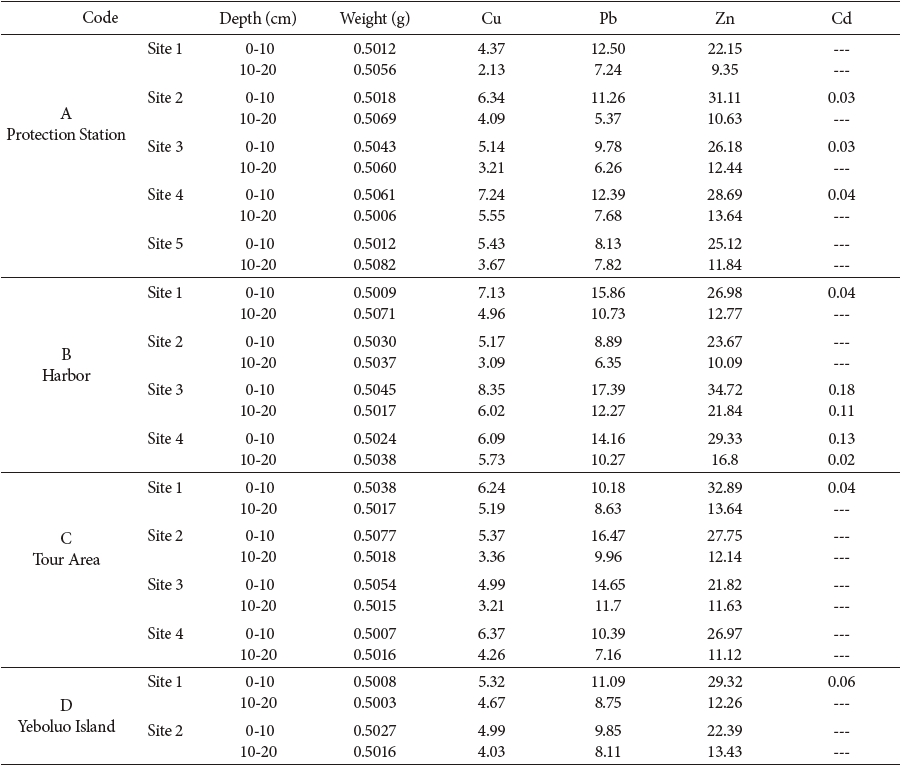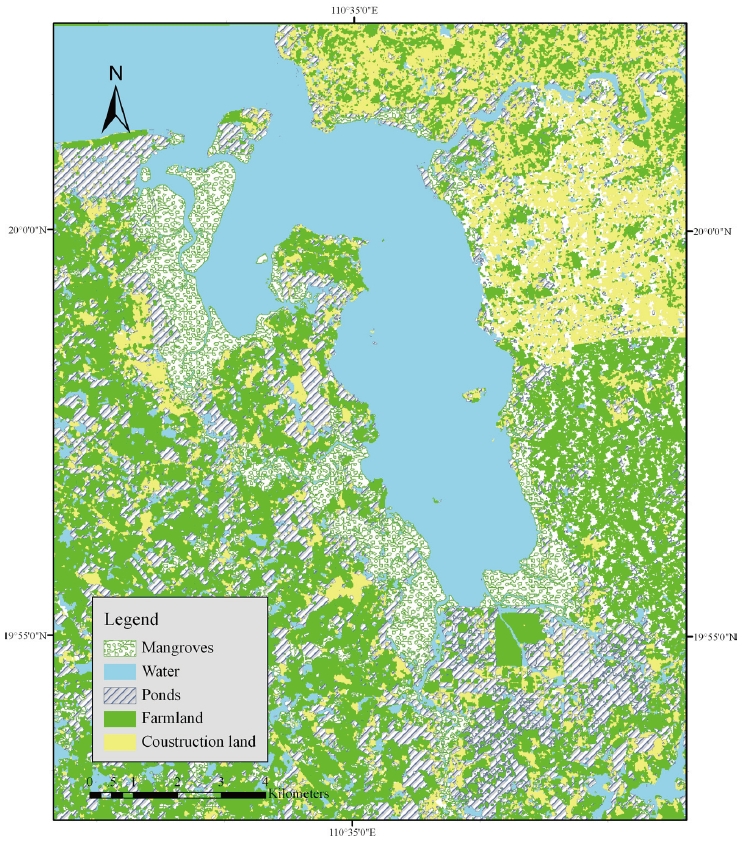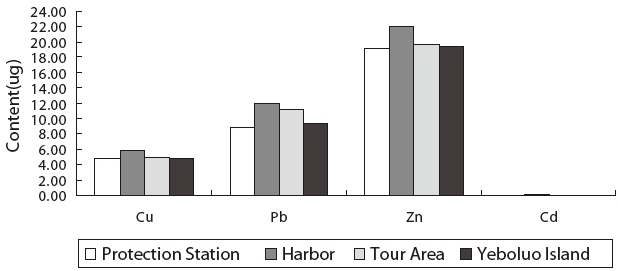



Mangrove ecosystems provide a variety of services for humans (Costanza 1997, Axell 1983), one of the most important of which is absorbing heavy metals (Dahdouh- Guebas and Jayatissa 2005). This ecosystem function can lead to the deposition of high levels of heavy metals in mangroves (Johnson 2006). So, it is important to understand the impact of heavy metals on mangrove ecosystems, and especially on soil subsystems (Pieter 2003, Fromarda and Vega 2004). We studied the ecological functions of mangroves in the Dongzhaigang Mangrove National Nature Reserve in absorbing heavy metals and reducing pollution, to provide a scientific basis for conservation and management of mangrove ecosystems (Nayak and Choudhury 2002).
Dongzhaigang Mangrove National Nature Reserve is located south of Haikou (19°51’N, 110°24’E, Fig. 1) on the island of Hainan. The reserve was established in January 1980 as the first mangrove nature reserve in China (Wetlands International, 1999), and encompasses 33.37 km2, of which 20.56 km2 is covered by mangroves. In 1992, the Dongzhaigang Mangrove National Nature Reserve was listed in the “Convention of International Important Wetlands”. The area has a tropical monsoon and marine climate, with an average temperature of 23.18°C. The average temperature in the coldest month is 15.11°C, and the extreme low temperature recorded was 2.13°C. The annual average rainfall in the area is 1697.18 mm. Dongzhaigang is a semi-enclosed and harborstyle lagoon shaped like a funnel (Wang Bosun 2001). Its north island has tidal channels on both sides that are connected with the Qiongzhou Strait, and that bring a lot of sediment to the harbor.
Sample collection: To assess the community composition, tide, age, and the impact of human activities, we collected soils from a total of 15 sampling locations within 4 plots at 0-10 cm and 10-20 cm intervals. The situation of the 4 plots is shown in Table 1.
Analysis Method: Step 1. All samples were air-dried, ground with an agate mortar, and passed through a 1-mm nylon screen. Each sample was well mixed, and then 5 g ofsoil was subsampled from each sample and ground until all 5 g of soil could be passed through a 0.15-mm nylon screen.
[Table 1] Outlines of sample plots in Dongzhaigang mangrove

Outlines of sample plots in Dongzhaigang mangrove
[Table 2.] Heavy metals in soil samples in Dongzhaigang mangroves

Heavy metals in soil samples in Dongzhaigang mangroves
Step 2. The nitric-hydrofluoric-perchloric acid method was used to decompose the soil samples for determination of the concentrations of Pb, Cd, Cu, and Zn in the soil according to GB/T 17141-1997, GB/T17138-1997, and GB/T17139-1997 (EPAC, 1997a, b, c).
Step 3. The concentrations of all soil heavy metals were measured by atomic absorption spectrometry (AA- 6601F, Shimadzu Co., Japan): Pb and Cd were measured by graphite furnace atomic absorption spectrometry (G-AAS), while Cu and Zn were measured by flame atomic absorption spectrometry (F-AAS).
>
The heavy metal content of the soil
The results of the analyses of the soil samples are shown in Table 2. The main heavy metal pollutants found in the research area, Zn, Pb, Cu, and Cd, were found in the soil samples at average concentrations of 20.06, 10.36, 5.04, and 0.06 μg/g, respectively.
>
The differences of heavy metal content in soil
The content of four heavy metals in different sites is shown in Fig. 2. Among the four sites, the concentration of heavy metals is the highest near the harbor, followed by the tour area and Yeboluo Island, and lowest near the protection station. Among the heavy metals, the soil content was highest for Zn, followed by Pb, Cu, and Cd.
The main source of heavy metals in the study area is motor boat discharge. Accordingly, the heavy metal concentrations were lowest in the soil samples collected in the protected area. The protected area plot is located in the nursery area, which is south of the Dongzhaigang Mangrove Protection Station and is less affected by human activities than other areas. In particular, this area is the farthest away from the port of the sampling sites, which means that it is less affected by pollutants from motor boats than other areas in the Reserve. The sample plot on Yeboluo Island is near the Yeboluo Island Port which is locates at a high tide beach. Its soil is affected not only by tourists but also by waste emissions from motor boats. These factors lead to heavy metal accumulation in the mangrove soil. The harbor sample plot is in the core of the mangrove tourist area. A number of motor boats for visitors in the mangroves dock in the harbor, which is near the sample plot. Accordingly, this sample plot is the areas of most intensive human activity in the study area, and the heavy metal content of its soil is the highest. Tourism is a pillar industry in Hainan Province. Appropriate and reasonable development of mangrove forest tourism is conducive to local economic development (Helen 2005), but the negative environmental impacts brought by tourism development should not be ignored.



